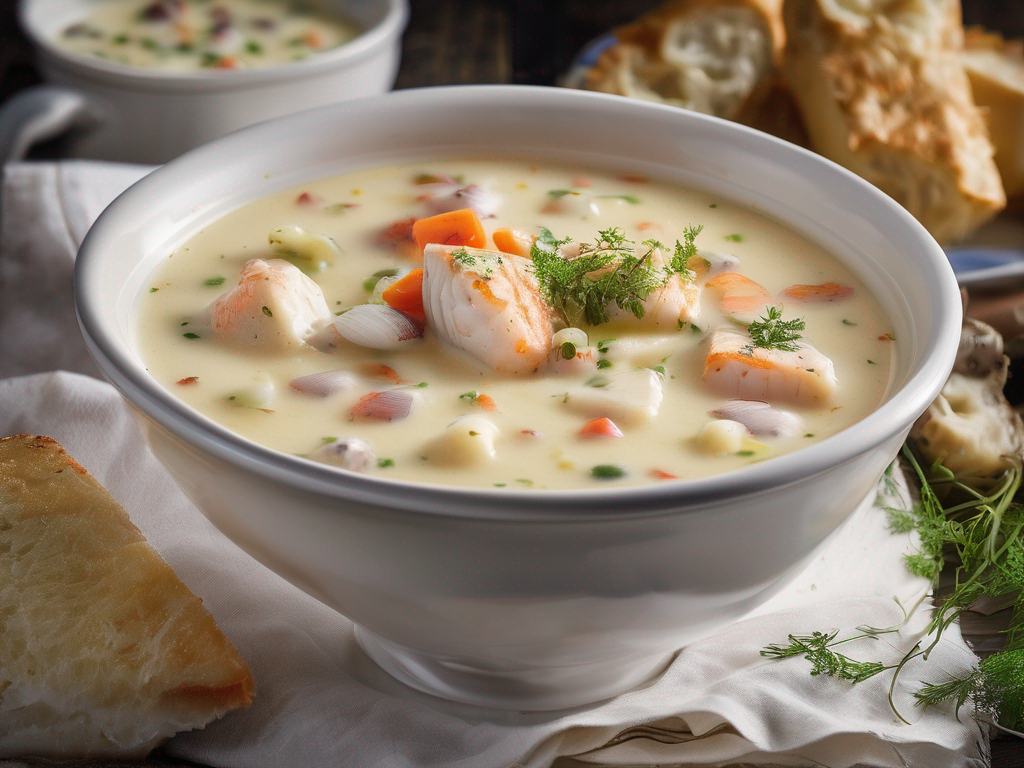
Is Your Homemade Fish Chowder Safe to Eat? Signs It May Have Gone Bad
Get Your Free Food Safety Cheat Sheet
30 most common foods with instant answers. Print it and stick it on your fridge—completely free!
Is Your Homemade Fish Chowder Safe to Eat? Signs It May Have Gone Bad
When it comes to homemade fish chowder, ensuring its safety and freshness is crucial to prevent foodborne illnesses. Fish is a perishable food item that can spoil quickly if not stored and handled properly. In this blog post, we will discuss how to tell if your homemade fish chowder has gone bad before consuming it. (Fish chowder homemade)
Understanding the Shelf Life of Fish Chowder
Homemade fish chowder typically has a limited shelf life compared to commercially canned or packaged versions. The key factors that affect the shelf life of fish chowder include:
- Ingredients: The freshness of the fish, dairy products, vegetables, and seasonings used in the chowder.
- Storage: Proper refrigeration at or below 40°F (4°C) is essential to slow down bacterial growth.
- Hygiene: Maintaining good hygiene practices during preparation and serving of the chowder.
Signs that Your Fish Chowder May Have Gone Bad
Visual Cues
- Mold: Any visible mold growth on the surface of the chowder indicates spoilage.
- Discoloration: If the chowder has changed color or appears dull, it may be a sign of deterioration.
- Separation: If the ingredients have separated or there is a layer of oil on top, the chowder may be past its prime.
Smell Test
- Foul Odor: Spoiled fish chowder will emit a strong, unpleasant odor that is different from its usual aroma.
- Sour Smell: A sour or rancid smell indicates the presence of harmful bacteria.
Texture Check
- Sliminess: If the chowder feels slimy or sticky to the touch, it has likely spoiled.
- Mushy Vegetables: Overcooked or mushy vegetables in the chowder can also indicate spoilage.
Safety Precautions for Storing Fish Chowder
To ensure the safety and quality of your homemade fish chowder, follow these storage tips:
- Refrigeration: Store fish chowder in airtight containers in the refrigerator for up to 3-4 days.
- Freezing: Fish chowder can be frozen for longer-term storage, but the texture may change upon thawing.
- Labeling: Always label containers with the date of preparation to track freshness.
- Thawing: Thaw frozen fish chowder in the refrigerator overnight rather than at room temperature.
Tips for Preventing Fish Chowder Spoilage
- Use Fresh Ingredients: Purchase fresh fish and vegetables from reputable sources.
- Cook Thoroughly: Ensure the chowder reaches a safe internal temperature of 145°F (63°C).
- Serve Promptly: Do not leave fish chowder at room temperature for more than 2 hours.
- Avoid Cross-Contamination: Keep raw fish and seafood separate from other ingredients to prevent contamination.
Conclusion
In conclusion, homemade fish chowder can be a delicious and nutritious meal when prepared and stored correctly. By understanding the signs of spoilage and following proper storage practices, you can enjoy your fish chowder safely. Remember to trust your senses and err on the side of caution when in doubt about the freshness of your chowder. (Fish chowder homemade)
Authoritative Food Safety References
These agencies and university labs inform every tip and health precaution we publish.
USDA FoodKeeper – Cold Storage Guidelines
Official refrigerator, freezer, and pantry timelines maintained by the U.S. Department of Agriculture.
Visit USDA FoodKeeperFDA Produce Safety Rule & Grower Guidance
Field-to-fridge handling practices that prevent contamination of fruits, vegetables, and leafy greens.
Visit FDA Produce SafetyCDC Foodborne Illness Prevention Hub
Surveillance-backed guidance on pathogens, symptoms, and steps to reduce foodborne illness risk.
Visit CDC Food SafetyUC Davis Postharvest Technology Center
University research detailing optimal storage atmospheres for produce after harvest.
Visit UC Davis PostharvestPenn State Extension – Home Food Preservation & Safety
Peer-reviewed extension bulletins on safe canning, chilling, and reheating practices.
Visit Penn State ExtensionGet Your Free Food Safety Cheat Sheet
30 most common foods with instant answers. Print it and stick it on your fridge—completely free! Want more? Upgrade to the complete guide with 70+ foods.
Scan your food directly and get instant safety info using our AI-powered camera feature.